Interview with Carol Coletta: Why Public Space is Fundamental to Democracy
A conversation spanning Coletta's pathbreaking work in public, private, and civic sectors
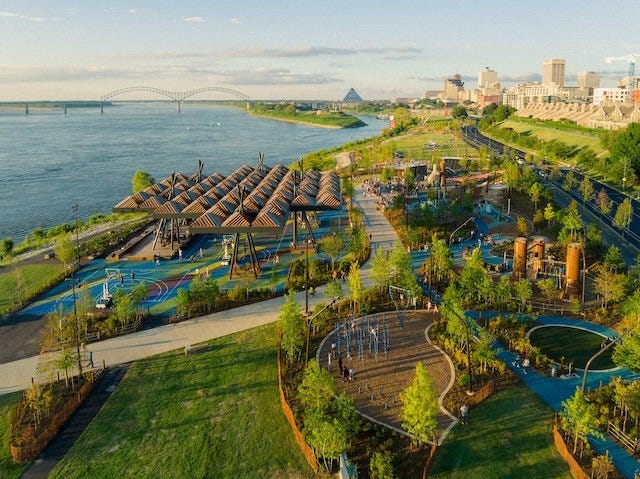

In the 2023 reader survey, you all wanted a podcast, so here I am delivering! I wanted to kick off my podcast with Carol Coletta because she embodies the kind of urban leader I want to talk to: She has an interesting life story, a tremendous and varied career, and the work she is doing now is worthy of international attention.
Coletta is president and CEO of Memphis River Parks Partnership, a nonprofit organization that stewards the riverfront on behalf of the people of Memphis. Over the years, Coletta has held leadership roles in organizations such as the Knight Foundation, ArtPlace America, Mayor’s Institute on City Design, and CEOs for Cities, and she has also held executive marketing roles at private companies, as well as run her own business, Coletta & Company.
For the past five years at Memphis River Parks Partnership, she has led the effort to renovate Tom Lee Park, a 31-acre site that connects the city, including some of Memphis’s most disinvested neighborhoods, to the river. Designed by Studio Gang and SCAPE, the new park offers places to exercise, socialize, and unwind – not only with friends, but with strangers. As Coletta’s answer to my first question reveals, this idea of connecting with others across racial, income, and geographic divisions has been a source of joy and meaning throughout her life and career.
This was my first attempt recording a podcast and I ran into technical difficulties, resulting in far from ideal audio quality. As a result, I have a great version of the interview in text and images below, in addition to the podcast recording. Thanks to listeners for patience as I learn how to improve my recordings and to Carol for being my first guest!

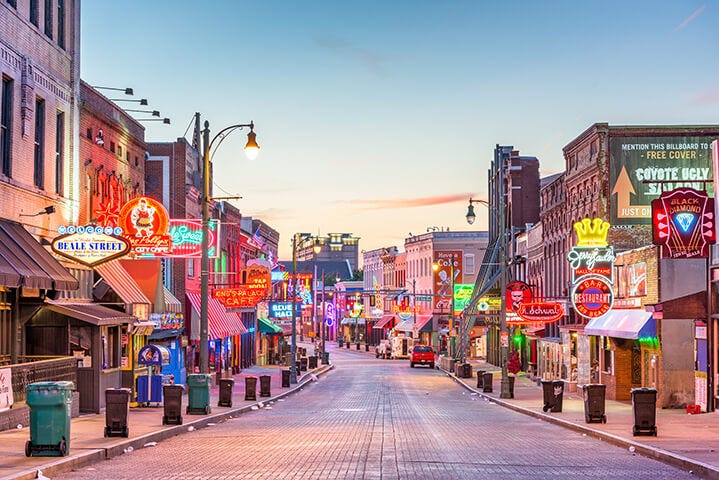
What was Memphis like when you were growing up, and was there anything about that experience that made you want to get involved in city making?
When I was in middle school I would take the bus downtown by myself and explore. And I just fell in love with downtown and being with people who didn't look like me and came from different parts of the city to downtown. That is certainly where my fondness for all things urban began.
When I was in early high school, the city was trying to decide what to do with Beale Street, a historic Black main street for the south. The Memphis Housing Authority had taken Beale Street as part of urban renewal and owned it. It was sitting there as a ruin. I wrote the mayor a letter telling him what he should do with Beale Street. I think being treated like a serious person when it came to city making at that age marked my career.
It's amazing that you did that at such a young age and that you were already reaching out to mayors. You have had a career that includes working for nonprofits, philanthropies, government, running startups of your own and working for large corporations. What did these different experiences tell you about how things actually get done in cities?
One thing I learned running CEOs for Cities is that leadership can come from everywhere. Too often in a quest to document or follow what we believe may be best practices, we think we can take what worked in one city and the leadership model there — a dynamic mayor or business group —and apply it to another city. But what you find again and again is leadership can come from anywhere, and you have to take it where you find it and make the most of it.


Before we talk about your work on the Memphis riverfront, I want to touch on your work as director of ArtPlace America — certainly an example of a multisector initiative. I have noticed that urban revitalization and the arts were once really closely aligned, but they don't seem to be aligned anymore, and I wondered why you think that is.
Why do you think they're not?
I ran something called the Arts + Business Council here in Philadelphia. And when I was there, it was celebrating its 40th anniversary. Back in the 1980s, the arts were often the first place that a lot of business foundations would go to give back to their community, and definitely that's not the case anymore, at least in Philadelphia.
That's a fair point. Part of it may be because cultural institutions, arts institutions are having to redefine themselves completely to match the way people want to engage in cultural activity. There's less engagement with traditional arts organizations, and therefore cities are also having to redefine how arts can be deployed and used to make their cities more vibrant. We are at a moment where all of that has to be reimagined and that's a painful process. Some organizations are going to fall away, but others will likely merge. It will be interesting to see how cultural institutions are redefined over the next decade.
When we started ArtPlace, it was not about the arts per se — it was about the effect art has on places. It was about art making places more vibrant. That was jarring to people who were running traditional art organizations who weren't thinking about that, or even to arts funders whose portfolios were intended to support traditional arts organizations. That is worthy work. It just wasn’t the work of ArtPlace.

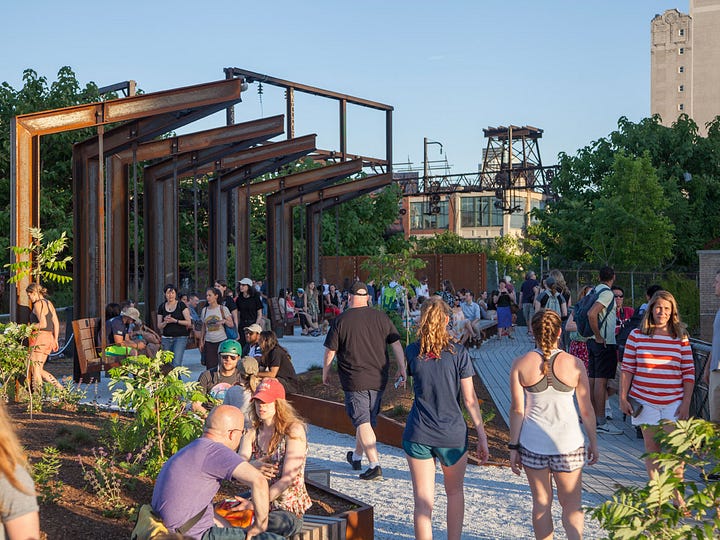
Another one of your signature projects, Reimagining the Civic Commons, is centered on places. How did this project, which you first led at the Knight Foundation, come about?
I’m always interested in assets that are not being fully deploying, that are underperforming. In the case of libraries, parks, neighborhood rec centers, and trails, they are typically single purpose: “a park is for recreation” or “libraries are for books.” Of course, we know all those walls are now coming down, but we had the insight that [leaders of libraries and parks] were struggling to adopt new frameworks for their work, new measures of success. So how might we help accelerate that? That was the idea.
Kresge Foundation became an investor in Reimagining the Civic Commons, and I was a senior fellow there so I was able to pursue that work also at Kresge, which loaned me to Memphis River Parks Partnership, the organization I now run. I was on the funder side for so long and then was able to come over to the practitioner side. It's been an incredibly rich experience to get a chance to say, “Okay our theory of change sounded good, but can we really make it happen on the ground? And what are the challenges to making that happen on the ground? To reimagine civic assets and their purpose?”
So were you really interested in seeing what it was like on the other side of things?
What I really care about is cities and their success. I'm fairly agnostic about the assets I get to work with to help make cities successful. So I was asking the same thing about the riverfront: How do we take this asset, grossly underused in Memphis, and make it perform, and punch above its weight to help make this city successful?
We had this rare piece of real estate in Memphis called Tom Lee Park. The 31-acre park is not only downtown-adjacent, but also within walking distance or easy access to some of the poorest zip codes, not only in Memphis, but in the state of Tennessee. That is a very rich platform for testing ideas about how you get people who are living in income-segregated ways to mix in place.
This is a very vexing issue for America today given that our patterns of living in America are increasingly income segregated. Rich people and poor people do not live next to one another, which means our schools and where people worship are more income segregated. Given those realities, where might we create income integration?
Public space may be the last frontier to do that. Parks have a very low bar to entry and a low bar to exit. If I take my kid to the wrong park, it doesn't mean he or she won't get into Harvard!
It's a perfect platform for testing some ideas that are fundamental to creating community and fundamental even to democracy.
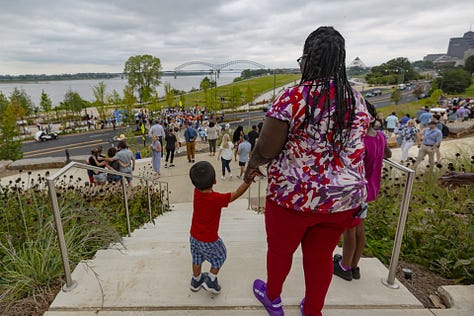



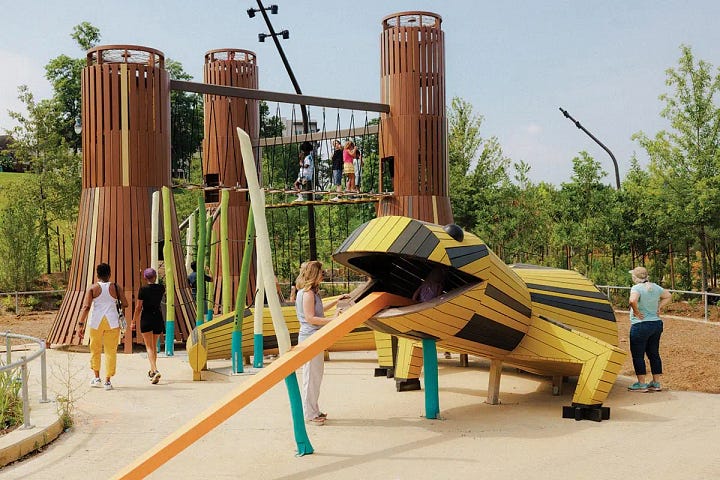
This vision of public space, fostering social connection and building equity in cities, is really inspiring to me. But I'm wondering when you presented this as an idea what the response was like?
It was very contentious that we would propose Tom Lee Park, but the equity questions were buried. Built on top of a Corps of Engineers dike wall, the space was a barely developed park. Nothing much would grow there. It was just some pathways and a very few trees with a couple of parking lots. It was a grim excuse for a park. But for seven days a year, there is a local festival that historically used this park as a festival ground. Building a new park became contentious because there was a feeling that you couldn’t have a great park that could also be a great festival grounds.
But the real question for me was the equity question, which in a lot of ways never got called in Memphis. Keep in mind, we are the country's largest majority Black city. We are also a majority Black county. So we are not a Black city encased in a white, suburb or white metro area. We're a Black city in a Black county in a metro area where, again, the largest demographic is African American. The fact that the equity question was never called is still a puzzle to me.
For anything that's perceived to be an amenity, people then ask: but what about paying to fix potholes? But people need parks as much as they need roads. I only wish you could do a whole lot of road work for the money we raised and money, particularly that the government provided, for this park. The park cost $2 million an acre. Show me another park that's received this much national and international attention that did it at $2 million an acre. Plus, we brought it in on time and on budget.
Now that it's built, it has received overwhelming approval. The whole process of building the park has for me called into question our methods of civic engagement and what the posers versus the people who just have to get up and get the kids, make breakfast and get their kids off to school and go to work every day, really want.
Are you saying that civic engagement processes really don't reach the regular citizens in our cities?
Yes. After we'd had so much contentiousness, we did an old fashioned, statistically valid survey, just like you would do in political polling. We sampled the entire city, but we over-sampled in particular in the disadvantaged neighborhoods that are close by. What we found was overwhelming enthusiasm for the park. This is before it was built. The most excited people were Black Memphians and young Memphians. Women and particularly the people in the disadvantaged neighborhoods wanted the park. Their approval rating was like 90 percent. The least enthusiastic people were older white men, but even they supported the park at 67 percent.
I think all of that was important because you start reading social media and comments and think, “Oh my God, maybe we've missed the mark.” But you do a statistically valid survey and you realize “No, not only have we not missed the mark, but the community is longing for this.” You can’t let a few orchestrated voices drown out anything new. This is particularly a challenge when everyone has a megaphone.
You have to be a brave person to buck tradition and try to create something new. And I don't believe that the cause of change is helped by the methods we currently use to judge the public's reaction to something [on social media].

I wanted to flip from the detractors to the people who have loved the park. I imagine that there have been some compliments or comments on the park that you've gotten personally that have given you goosebumps. What has been rewarding that you have heard from people about their experience about the park?
I'm going to give you two stories. One is a comment and one was a situation that just moved me.
The comment that I love the most is, I can't believe we did this in Memphis. I can't believe I'm in Memphis. There's nothing in the water in Memphis, there's nothing in the air, there's nothing in the soil that keeps us from succeeding, that keeps us from doing great things. So we did this right here and we can do this again and again. The more you [accomplish something like this] the more you give people confidence, and it makes it easier for the next success to happen.
The one that really got my heart is that on one of the early weekends at the basketball courts — which by the way, many people said not to do basketball courts, and I'm so glad we did. They're so active all the time, a lovely expression of humanity. One day at the basketball courts we had a DJ named Brother John, a wonderful guy who is our culture keeper in the park, and guys were playing basketball and people were everywhere. I can’t see a piece of garbage and not pick it up, so I'm picking up trash and Brother John says, “The lady who runs the park is here. How many of you are enjoying Tom Lee Park? Put your thumbs up.” And everybody put their thumbs up. Great. And it made me feel so good. And then they went back to playing basketball, and I went back to cleaning. Eventually my hands were full because I didn't have a trash bag with me, and two basketball players came over and said, “Let me help you with that.” I said, ”No guys, I've got it.” They said, “No, we want to help you with that because we appreciate you giving us and our kids a great place to play.”
Every time I tell that story, I think: That was the payoff. It was not just a thank you. It was a thank you and let me help you do this. Because we want to keep this place nice for us and our kids to play. It's just, it still blows me away.
Public space has a unique role to play in building community and building democracy and in creating opportunity. Public space run properly is a critical piece of the equity equation and getting that right is a responsibility. It's a serious responsibility. All of us who run public space in various forms have that responsibility to be deeply curious about how to get people mixing in space, in place, and then forming relationships out of that.




